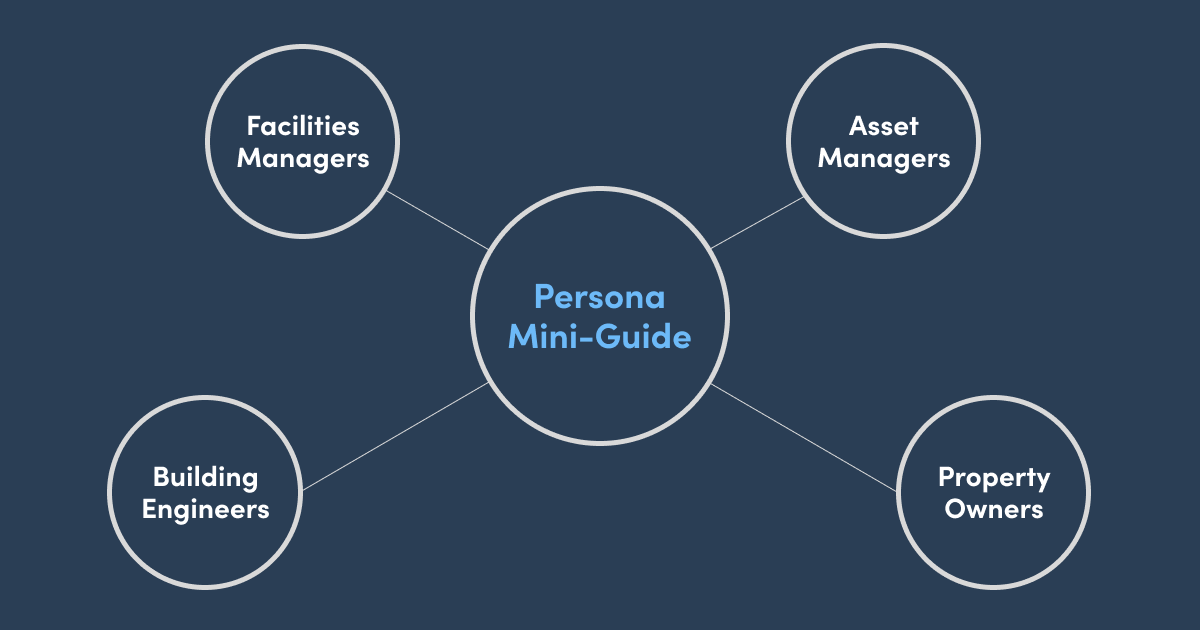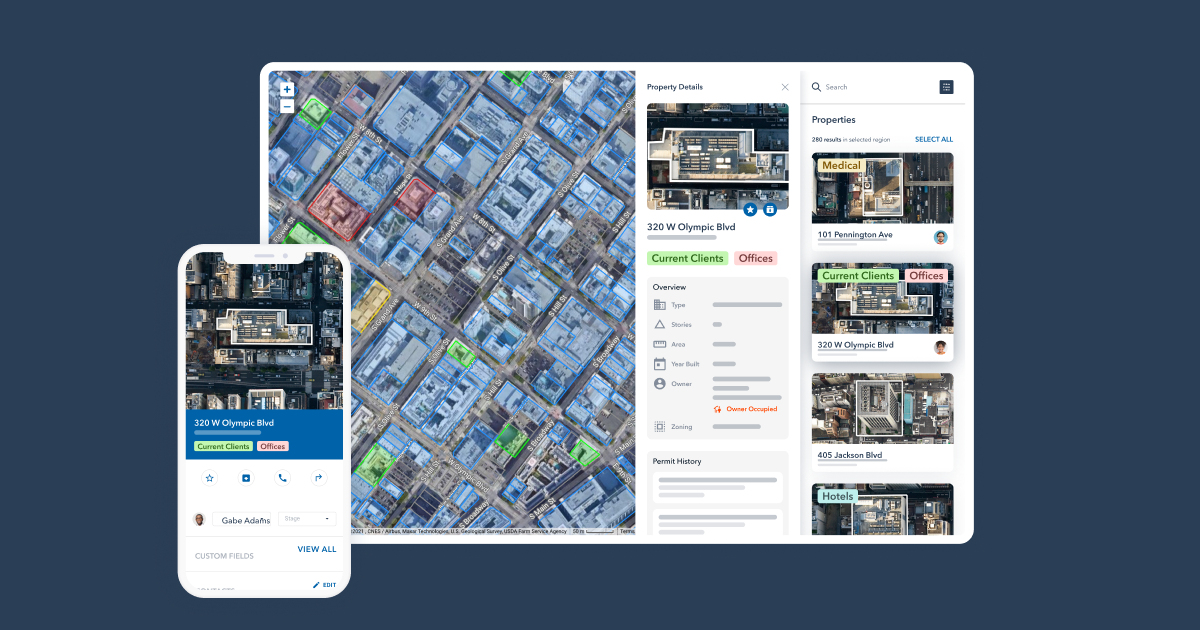Introduction: The Prospecting Wall No One Talks About
In commercial services sales, the ability to connect with the right decision-maker is everything.
Property managers, facility directors, and asset owners hold the keys to new contracts, and your team's ability to consistently hit quota depends on getting through to them.
But let’s be honest: reaching decision-makers at commercial buildings isn’t easy. You’re up against gatekeepers, outdated contact info, decentralized property portfolios, and crowded inboxes. And when you're relying on cold lists, LinkedIn digging, or “front desk” voicemails, it’s a grind.
Still, the fastest path to closing deals is simple: get to the person who can say “yes” (or “no”).
In this article, we’ll walk you through a modern, effective strategy to:
Identify the right contacts inside commercial buildings
Navigate gatekeepers without getting blocked
Use property intelligence and outreach tools to cut prospecting time in half
Deliver value that earns the meeting
Let’s get into it.
Understanding the Target Audience

Identifying Key Decision-Makers
The biggest mistake sales teams make? Starting with company names instead of people. In commercial property sales, the job titles that matter most often fall into four categories:
Property Owners: Responsible for capital allocation, long-term contracts, and strategic priorities.
Facility Engineers: Handle day-to-day operations and maintenance—key influencers on vendor selection.
Purchasing Directors: Own the procurement process, including budgeting and approvals.
Building Managers: Control operations and vendor performance, especially in multi-tenant or managed properties.
Persona Mini-Guide: Who They Are and How to Reach Them

Facilities Managers: Respond to clear solutions that help them manage equipment lifecycles, reduce downtime, and maintain compliance. Think: maintenance tools, HVAC contracts, janitorial SLAs.
Asset Managers: Want to hear about ROI, depreciation schedules, and long-term capital planning? They’re often juggling multiple buildings.
Building Engineers: May not be the approver, but they’re often your internal champion. Speak to their daily pain points and operational wins.
Property Owners: Often work through managers but hold the purse strings. Messaging should be executive-ready—tight, numbers-focused, and built around strategic benefits.
Market Segmentation
Tailor your outreach by building type:
Office Complexes: Portfolio-managed. Look for centralized facility leads. Focus on occupancy, tenant retention, and maintenance.
Healthcare Facilities: Compliance and reliability matter more than price. Emphasize safety, air quality, and operational continuity.
Retail Centers: Often shared between corporate and site-level. Highlight work done with similar chains or franchises.
Industrial Properties: Prioritize uptime, energy savings, and OSHA alignment.
Apartment Complexes: Tenant satisfaction and rapid response matter. Often managed by third-party firms or on-site teams.
Effective Prospecting Strategies

Strategic Outreach Approaches
Decision-makers don’t respond to volume. They respond to relevance.
Time your outreach: Call between 10 AM –12 PM or 4–6 PM (Forbes).
Use multichannel outreach: Combine email, phone, LinkedIn, and video. 66% of buyers prefer email; 21% still respond to cold calls (Forbes).
Personalize with context: Reference building data, permits, or nearby work.
Creative Methods for Establishing Connections
Go beyond “just checking in.” Try:
Loom walkthrough of their property and how you can help
AI-generated talking points tailored to their site
Tagging decision-makers in LinkedIn thought leadership
Sharing snapshots like “Top 3 Signs Your Building Needs an HVAC Upgrade”
These aren’t gimmicks—they’re pattern breakers that boost reply rates.
What to Say in the First Message
Don’t lead with a pitch. Lead with relevance.
Use building or permit intel as your wedge. Follow this structure:
Subject: Include a benefit or property detail with their name
Line 1: Personalize with a data point (address, permit, building age)
Line 2–3: Add social proof or outcomes
Line 4–5: Suggest a relevant opportunity
Line 6: Use a soft, collaborative CTA
Example:
Subject: Energy savings for 80's era hospitals
Hi [First Name], I saw your hospital at 212 Franklin Ave was built in 1983 and recently pulled a mechanical permit. We’ve helped similar healthcare facilities in Indianapolis extend HVAC unit lifespan and reduce energy spend by 15–20%, without major system disruptions.
Based on the age, size, and recent activity, there may be an opportunity to reduce costs and boost performance. Happy to share an example from a nearby project if helpful.
Would a short walkthrough next week work?
— [Your Name]
A 2025 Beehiv study found that cold emails over 500 characters average a 7.5% response rate. Personalized, building-specific emails convert 22% better.
Leveraging Property Data and Intelligence Tools

Most sales teams are stuck spending hours stitching together spreadsheets, outdated lead lists, Google Maps, and LinkedIn research, just to figure out who they should call.
Convex changes that by giving you everything you need in one platform. Built specifically for commercial services sales teams, Convex lets you:
Draw your territory on a map and instantly see every commercial building in that area
Filter by building type, age, square footage, and permit activity
View verified decision-maker contact info at the property level
Spot warm leads using real-time buyer intent signals
Use AI-generated messaging to personalize emails, videos, and call scripts in seconds
Instead of guessing who to reach out to or spending your day on dead-end research, Convex’s Atlas helps you focus only on the buildings and buyers that matter most.
Here’s what that looks like in practice:
Filter by size, permit activity, or property type
Access verified contact info at the building level
Use Signals to spot buyers already in-market
Real-World Example: MSD Transforms Sales Time into Pipeline

MSD (Mechanical Services & Design) in Dayton, OH, used to rely on 100 cold calls per week and hours of manual research. Their VP put it simply:
“We were losing time, we weren’t going to get back.”'
After adopting Convex, reps now log in a few times per week, filter buildings by intent data and key criteria, and qualify leads in under 5 minutes. In 18 months, they generated over $42M in pipeline, without increasing the size of their team or their workload.
Navigating Gatekeepers and Barriers

Techniques for Engaging Gatekeepers
Gatekeepers aren’t roadblocks—they’re access points.
Start with context: “Hi [Name], I’m reaching out about the [type] property at [address]...”
Show you’ve done your homework by referencing something relevant: signals, permits, equipment data, or ownership data
Ask respectfully: “Would it be asking too much to share who handles vendor decisions for that site?”
Most professionals rarely reply to emails that ask us to do the work, like “Who handles this?” If there’s no context, we usually skip it, and it may even get sent to junk.
Gatekeepers feel the same. Be specific. Be informed. Treat them as professionals, and they’ll often help you get through.
Overcoming Common Prospecting Obstacles
In sales, rejection is just a datapoint. You have to keep that in mind because you’re going to experience it quite a bit.
It takes eight touches to land a meeting (Rain Group)
80% of deals need 5+ follow-ups, but 44% of reps quit after one (Data Axle Genie)
In short, reps who iterate quickly based on the feedback they receive and stay in the game (aka, follow-up) win more often.
Delivering Value to Secure Meetings
Crafting Compelling Value Propositions
Your message is only as strong as its relevance.
Decision-makers care about:
Reduced operating costs
Improved system performance
Fewer complaints from tenants
On-time service with measurable ROI
Here’s a quick formula to use when sharing details about your solution:
“We help [building type] teams [achieve result] by [doing this].”
Here’s how it looks as Social proof:
"We recently helped a facilities director at a 120,000 sq ft mixed-use property cut HVAC service costs by 18% without disrupting their service.”
Follow-Up Strategies That Work
Persistence isn’t nagging—it’s about delivering value at scale. Each follow-up should add something new:
A stat, trend, or case study
A short walkthrough video
A timely regulation update or article
Your final touch can be simple and low-pressure:
“Is this a priority for you? If not, I’ll check back next quarter…”
Best Practices and Common Pitfalls in Sales Outreach
Even the best outreach strategy can fall flat if your execution misses the mark. Whether you’re reaching out to a facilities manager or a property owner, how you say something often matters more than what you’re offering. Here are a few tried-and-true guidelines to keep your prospecting on point—and out of the junk folder:
Dos:
Personalize based on building data
Treat gatekeepers as allies
Use CRM insights to track what’s working
Follow up consistently, and add value every time
Don’ts
Don’t spray generic messages across your territory
Don’t ask for 30 minutes in the first email
Don’t skip your tools—use them to work smart
Don’t pitch features—speak to outcomes
Your Sales Prospecting Playbook in Action
Reaching decision-makers at commercial buildings isn’t about luck—it’s about using the right strategy, tools, and tone.
The most effective reps today are combining targeted property data, buyer signals, and personalized outreach to stand out in a crowded inbox.
Here’s what it takes to win:
Know who you’re targeting—and tailor your message to their role and property type Use building-level insights (like permits and square footage) to cut through the noise.
Treat gatekeepers like partners, not blockers.
Follow up with value, not just reminders.
Lean on tech like Convex to work faster, smarter, and more precisely.
Master those, and you’ll spend less time guessing—and more time closing.
Conclusion: Reach the Right People, Not Just More People

Reaching decision-makers at commercial buildings isn’t random—it’s systematic.
The best reps use:
Property data to find warm leads
Signals to prioritize outreach
Insight to lead with value
Follow-ups to stay top-of-mind
That’s why commercial services teams use Convex. Our platform combines verified contact info, building-level intelligence, and AI messaging tools to help you:
Reach the right decision-makers faster
Cut prospecting time in half
Build a sales pipeline that closes
Ready to prospect smarter, not harder? Schedule a demo of Convex to see how top sales teams unlock more meetings—and more momentum.
Share





